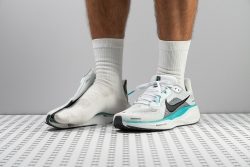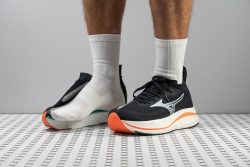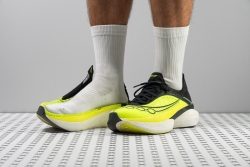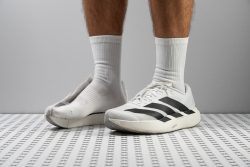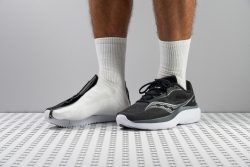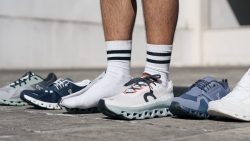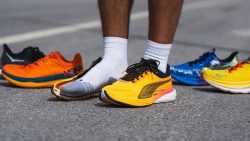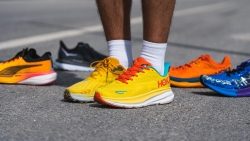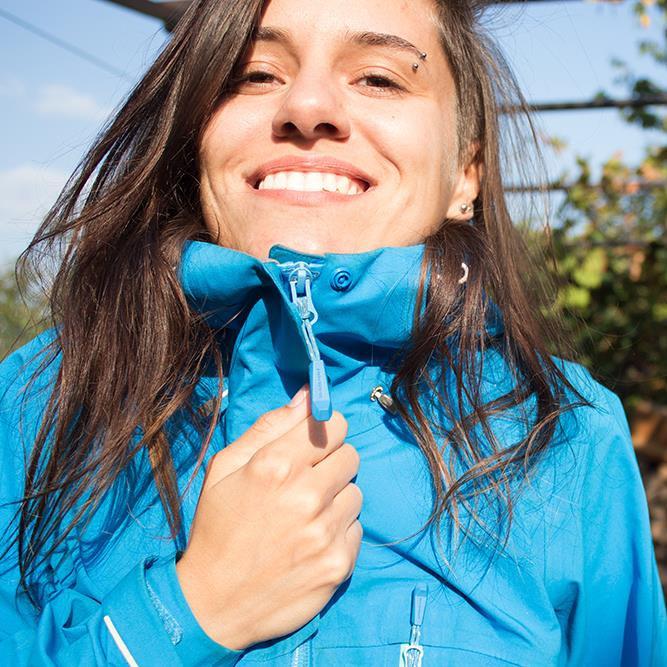7 Best Treadmill Running Shoes in 2025
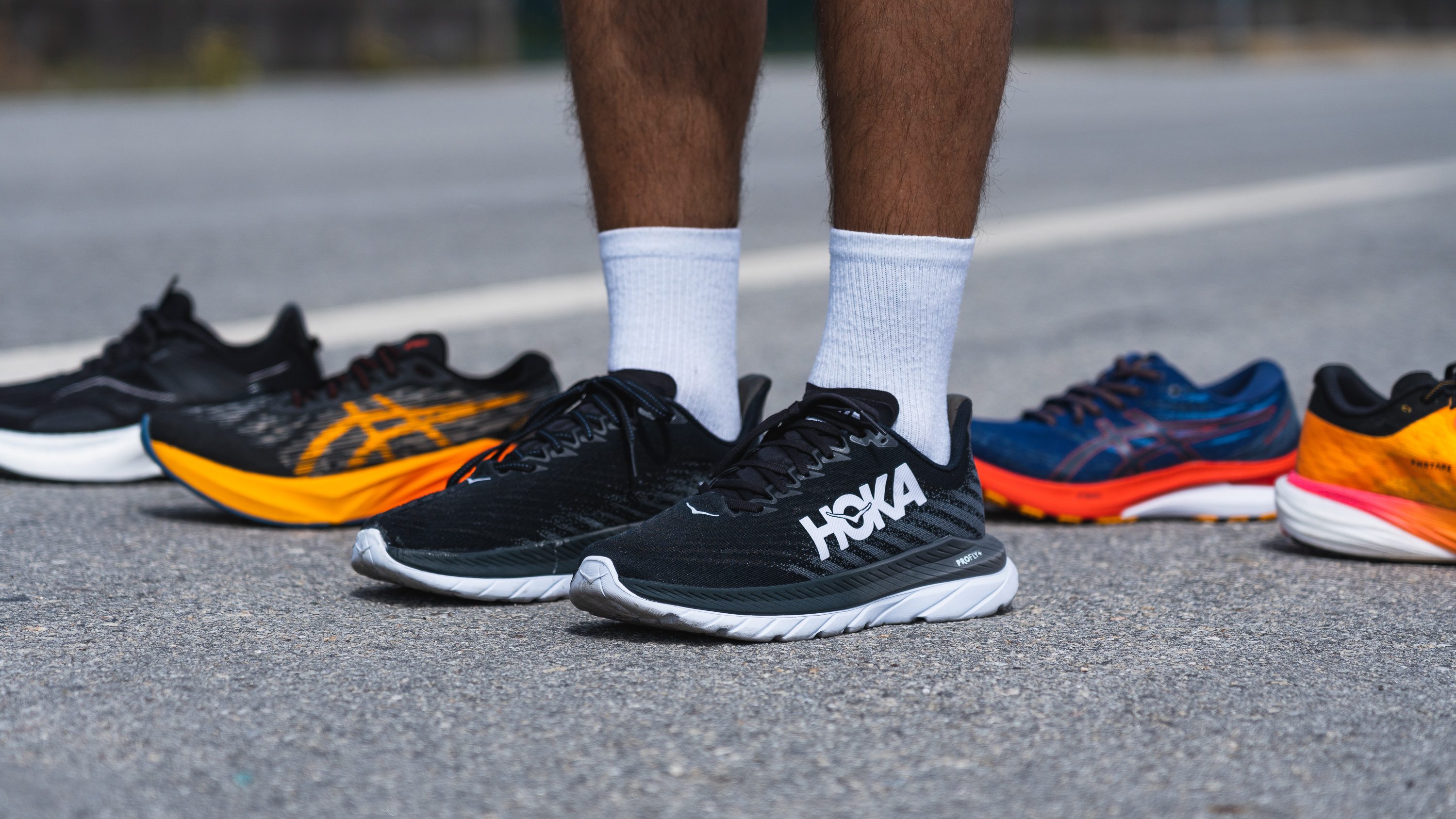
We buy shoes ourselves. We earn commissions when you buy through us, at no extra cost. Why trust us
Running on a treadmill resembles road running more than trail running because there are no twists, turns, puddles, or obstacles. Ideal for tempo runs! But, the surface is softer than roads.
That’s why nearly all road running shoes (which is â of the market) can be used for running on a treadmill. We have selected various categories depending on what you may consider a priority. Is it the shoe’s versatility? Cushioning? Support? Ability to go fast? Price? We’ve got the top pick across many categories, all thanks to our field tests and lab tests.
This guide also includes our expert advice on choosing the best treadmill running shoes.
How we test treadmill running shoes
We spend hours scrutinising every single release on the treadmill and in our independent shoe lab:
- As committed testers, we run in each pair to provide extensive feedback.
- We then slice the shoes up into pieces and measure over 30 different parameters to translate features and performance into comparable data.
- We buy all treadmill running shoes with our own funds to stay unbiased.
Find the best picks in different categories here, along with the in-depth guide on what to pay attention to when buying treadmill running shoes and how to recognise the features you care about!
Best treadmill running shoes overall
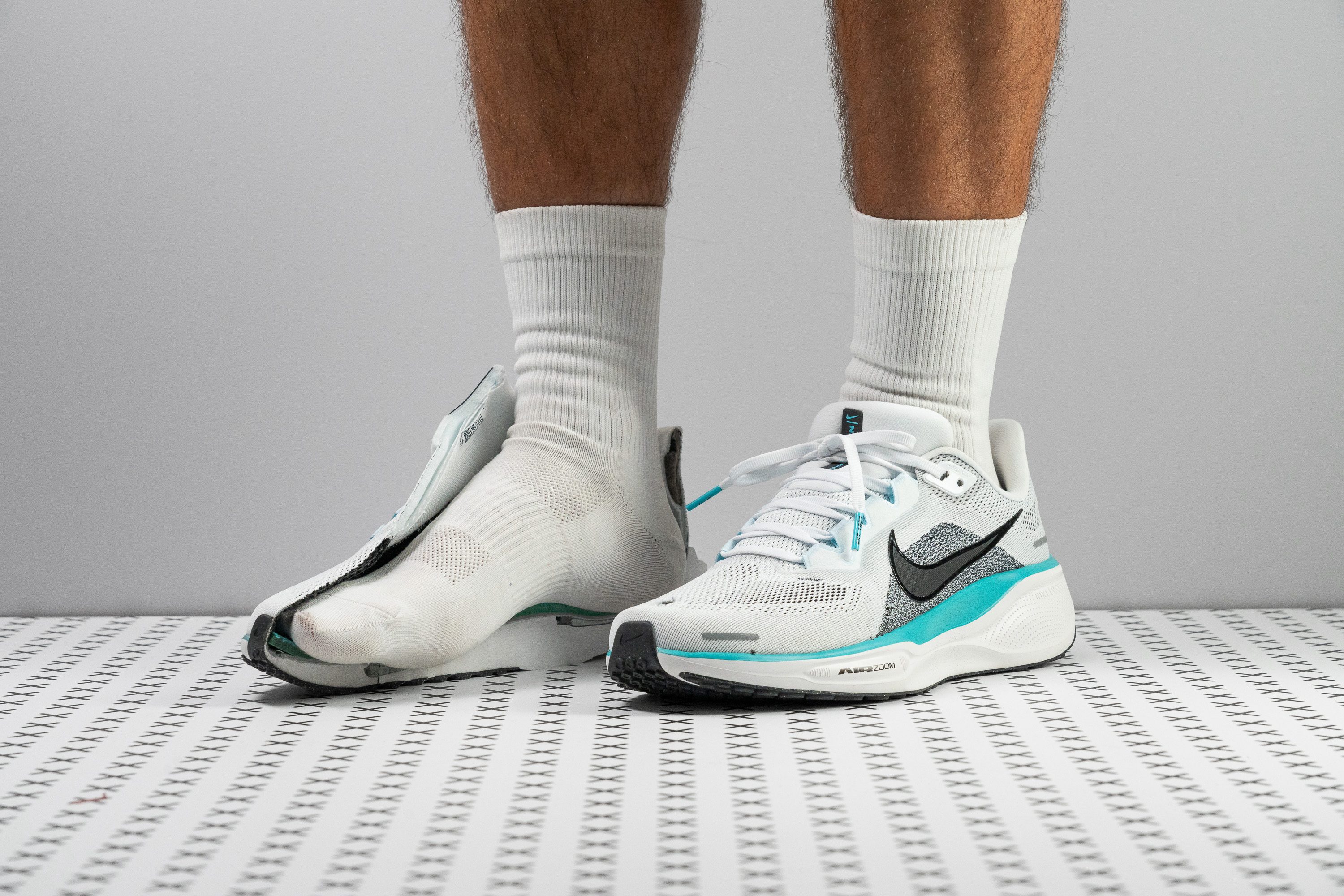




























































What makes it the best?
We thoroughly enjoyed our treadmill runs with the Nike Pegasus 41, which continues to be a staple running shoe. It oozes divine levels of comfort and continues to impress with its versatility and consistent performance. Standing out in the all-rounder game, our lab results agree with our sentiments: the Peg is our top treadmill running shoe.
The midsole features the ReactX midsole with dual Air Zoom units, providing a plush yet responsive ride. Pushing our durometer against the foam shows it’s 26.2 % softer than average, enhancing comfort without sacrificing stability.
The Peg feels easy on foot with its exceptional flexibility, with a 37.3% greater bendability than average in our 30-degree test. This adaptiveness makes it suitable for activities beyond running, further cemented by its low torsional rigidity score of 2/5.
Crafted with dual-layer mesh, the upper seamlessly combines softness with breathability, earning a solid 4/5 on our smoke test. No matter how heated our indoor runs get, hotspots and sweaty feet won’t be a problem.
The Peg is also known as the ultimate daily trainer. Because of this, those with more specific needs in terms of speed or stability may find this shoe lacking. Those who prefer more energy return or support are better off elsewhere.
Pros
- Enhanced for heel strikers
- New ReactX foam!
- Improved breathability
- Plush upper
- Good durability
- Several stability enhancements
- Newly designed rocker and bevel
- Solid performance
- Superior lockdown
- Sustainable features
Cons
- Price increased by $10
- Worse than the v40 in cold temperatures
- Poor grip
- Poor grip
Running shoes for treadmill with the best shock absorption
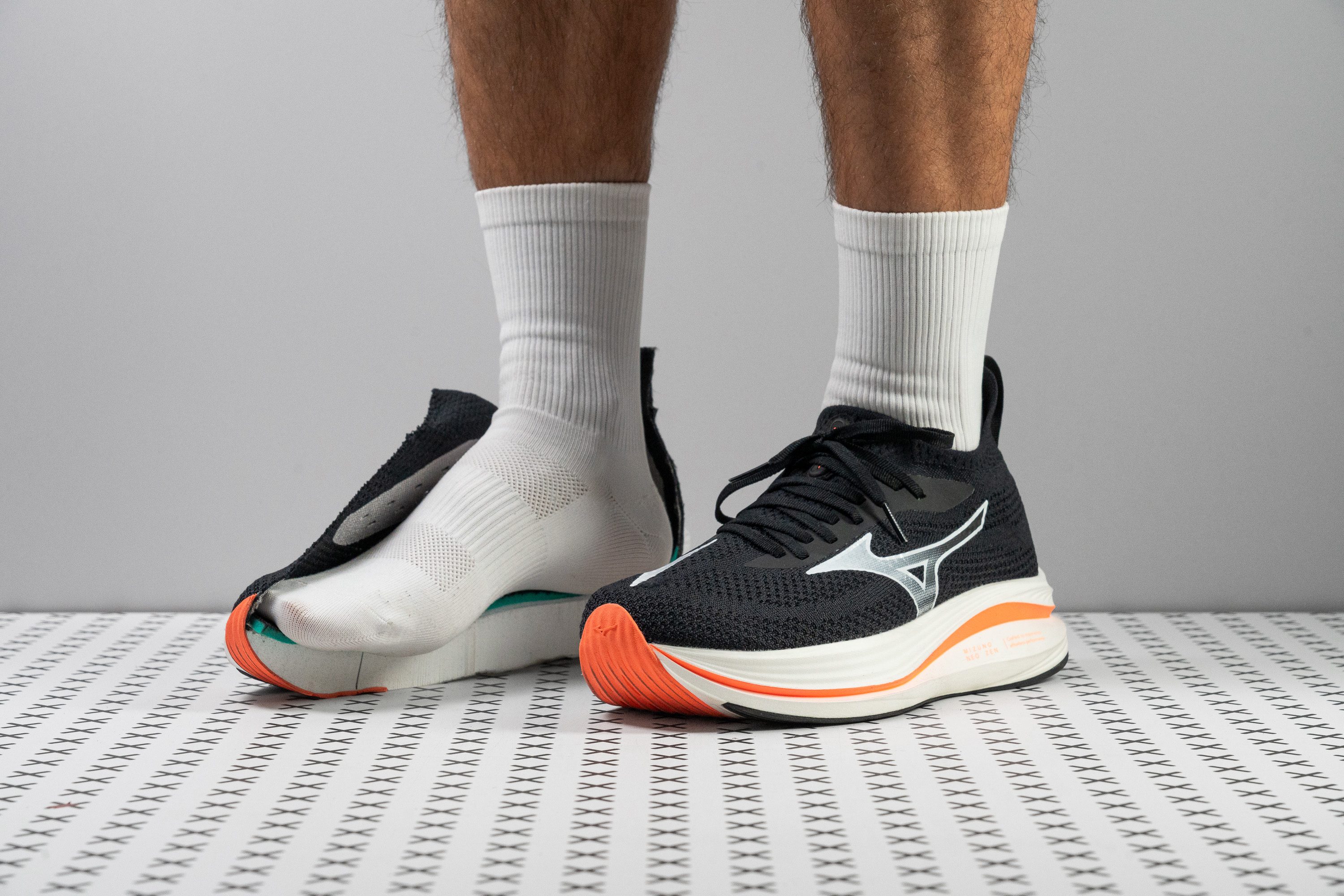


















































What makes it the best?
Our search for the best shock-absorbing treadmill-running shoe ended when we found the Mizuno Neo Zen, which fully embodies maximum impact protection. This shoe envelops our feet with luxurious padding from all angles, as proven by our lab. It elevates comfort to new heights as it delivers a natural ride through its lightness and flexibility.
What’s amazing about Neo Zen is how it offers maximum joint protection without our feet feeling the shoe’s bulk. Its sky-high 41.0/34.0 mm stack erases landing impact and ground feel almost entirely with its high level of shock absorption, proven by our lab test with amazing scores of 158 SA in the heel and 129 SA in the forefoot. With figures way above average, we had no doubts about its ability to reduce landing force.
Despite its generous foam, it surprisingly weighs only 8.3 oz (234g), 11.7% below average. The midsole has a lot of give for bending our feet, which enhances its lightness. In our flex test, it emerged 14.7% more malleable than average.
The padded knit upper has a premium touch. Despite its plushness, we had no encounters with overheating in our indoor runs, courtesy of the well-ventilated upper. And breathable it is, as our smoke test reveals a solid 4/5 rating.
Note that its super soft foam may feel unstable, particularly for heel strikers. Runners who need extra reinforcements should go for a more supportive trainer.
Pros
- Plush and bouncy foam
- Feather-light for a max-stack trainer
- Fun, agile ride
- Ideal for long runs
- Solid value for performance
- Comfortable and breathable knit upper
- Toebox resist heavy wear
- Eye-catching design
- Outsole grips and lasts
Cons
- Wobbly for those needing support
- Heel sink slows rearfoot strikers
- Upper lacks padding and structure
- Enerzy NXT firms up in cold conditions
Best lightweight running shoes for treadmill
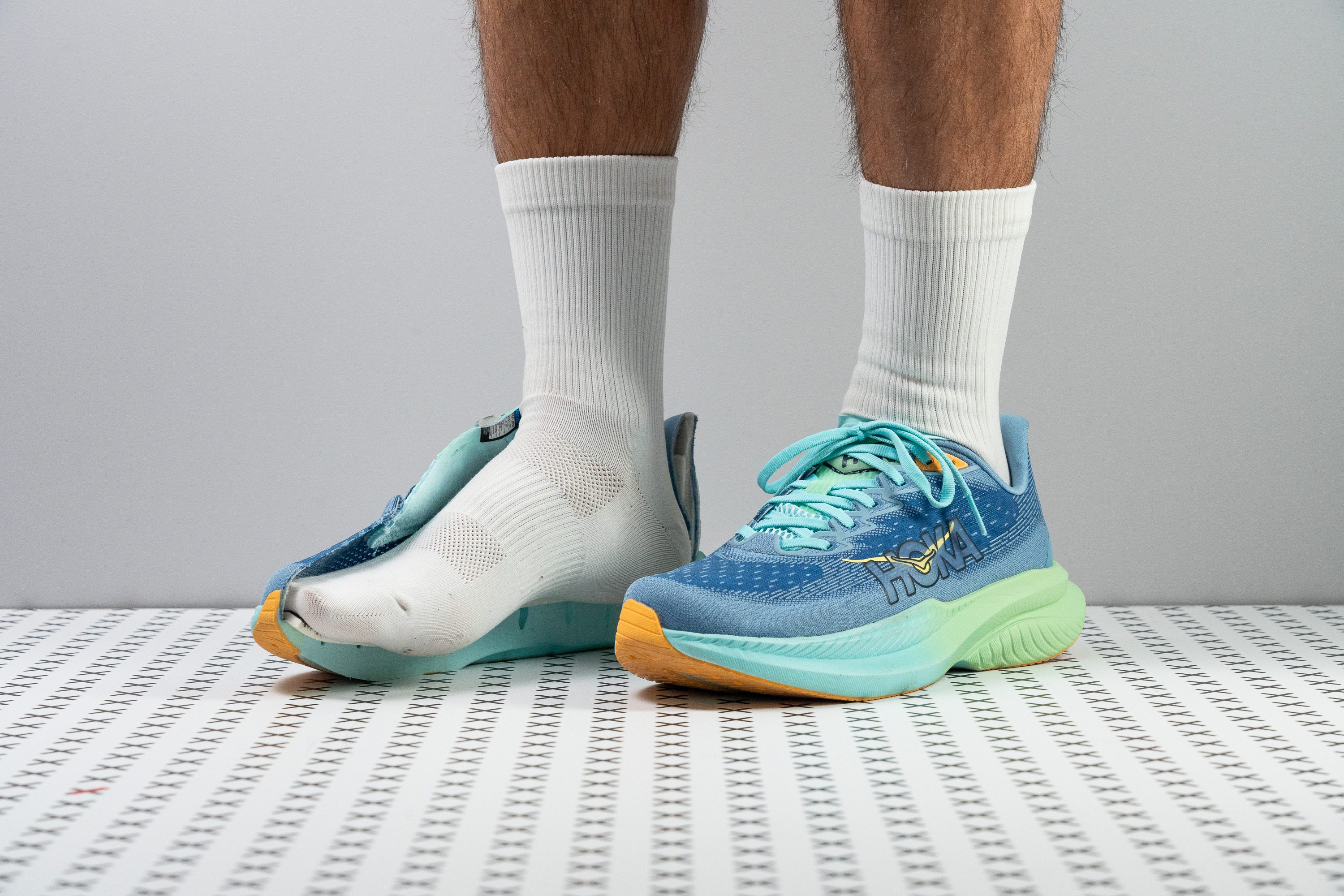























































What makes it the best?
Hoka Mach 6 brought our treadmill experience to life with its refreshing ride and featherweight feel. This versatile trainer responds to interval training, provides comfort for LSDs, and offers flexibility for easygoing days. It's a vibrant companion, packed with features that elevate our indoor runs, earning the best lightweight treadmill running shoe title, as confirmed by our lab tests.
Weighing a mere 8.2 oz (232g), it’s 12.5% lighter than the average road running shoe. Its loose and fluid build adds to its weightlessness as it follows our natural foot contortions with ease. Our bend test confirms that Mach 6 is 36.4% more flexible than average, bringing unparalleled agility to our strides.
We’re in awe of how airy the shoe feels despite its generous cushioning. Each landing impact feels protected with the 36.0/26.4 mm stack that is composed of a light and balanced 20.4 HA foam.
Wrapping up the breezy experience is an ultra-breathable knit upper, making heated indoor sessions more bearable. As we pumped smoke into the shoe, it escaped seamlessly, earning an impressive 5/5 breathability score.
However, its toebox tapers significantly in the big toe area. Those with square-shaped feet should find more comfort in other trainers.
Pros
- Really lightweight
- Fantastic outsole
- Exciting ride
- Highly cushioned
- Great for heel strikers
- Handles faster paces
- Superb lockdown
- Excellent value at $140
Cons
- Drop varies from stated
- Tapered toebox
- Thin tongue
Treadmill running shoes with the best energy return
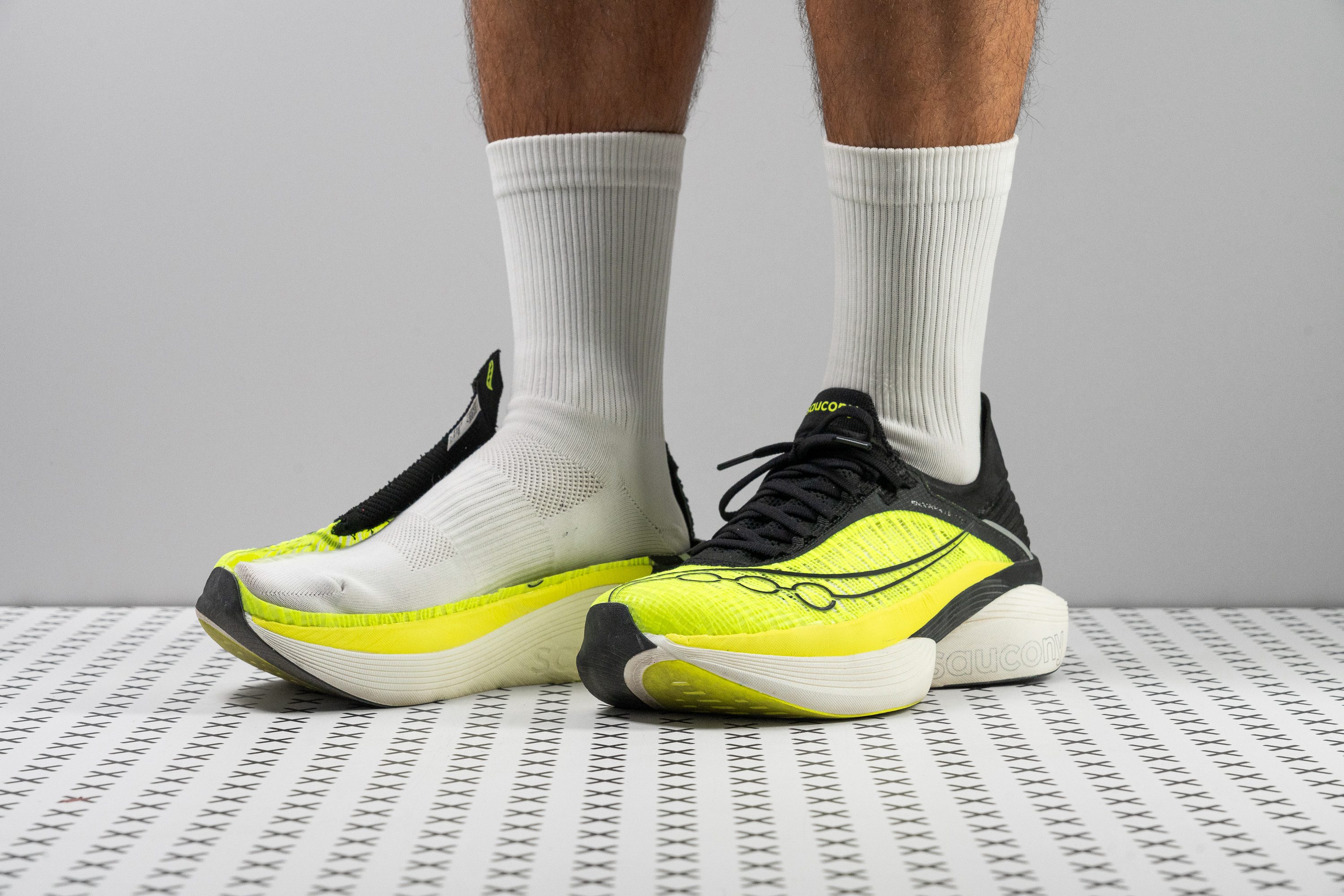















































What makes it the best?
The Saucony Endorphin Elite 2 brought our indoor runs to life with its boundless energy, divine cushioning, and breathable build. It feels explosive underneath, backed up by record-breaking lab results, and is our treadmill running shoe with the best energy return.
The IncrediRUN foam sets a new standard for responsiveness and feels so incredible underfoot. Measuring for energy return, we recorded 80.6% in the heel and 82.1% in the forefoot, the highest we’ve encountered so far, and our feet can’t deny it!
Another feature we enjoyed is its impressive impact protection. With a maximum height of 39.9/32.4 mm, and top-level shock absorption of 157 SA in the heel and 123 SA in the forefoot, we feel like we could keep running forever with its uber-plush platform.
And when the adrenaline sets in and the heat goes up, the upper keeps us cool and refreshed. In our lab test, the smoke we pumped in flowed out easily, proving it deserves the maximum 5/5 breathability score.
However, the soft and stacked cushioning demands proper form. Those who need extra support should try stability shoes.
Pros
- Record-breaking energy return
- Ultra-plush foam
- Fantastic shock absorption
- Addictively bouncy and fun feel
- Ideal for the marathon distance
- Durable and breathable upper
- Improved lockdown with knit tongue
- Stack height maxes out the legal limit
- Explosive, forward-driving ride
Cons
- A touch heavy for being an elite supershoe
- Budget-crushing price
- Lateral stability is extremely bad
- Lacks specific support for heel strikers
Best stability running shoes for treadmill














































What makes it the best?
We never felt this level of security and comfort until we wore the ASICS Gel Kayano 32. Our lab findings show that its substantial FF Blast+ ECO foam delivers luxurious cushioning, while the 4D Guidance System and expansive platform offer unwavering support. With these, it ranks as our top stability shoe for treadmill runs.
Its 4D Guidance System cleverly gives custom-made support—adjusting to our foot shape with further use and delivering top-tier protection and comfort. Further securing our landings is the wider-than-average midsole, with an extra allowance of 5.5/6.5 mm in the forefoot and heel to help us find our footing.
Since the stability features are so effective, GK32 has the advantage of offering plush cushioning. Our calliper reveals a whopping 39.9/30.6 mm stack, with far above-average shock absorption scores of 133/116 SA in the heel and forefoot, respectively. This supportive shoe spoiled us with ASICS’ leg-saving foam and adds the PureGEL in the heel for even gentler landings.
Unfortunately, GK32 stays true to the stability shoe’s branding in terms of weight. At a heavy 10.4 oz (295g), it burdened us during faster efforts and performed best during easy runs.
Pros
- Amazing shock absorption
- Plush and breathable upper
- Made to last
- Dependable for most pronators
- Heavy-duty outsole with excellent grip
- Stable as a table
- Pillow-soft heel padding
- Improved fit
- Excellent build quality
Cons
- Not for soft-foam lovers
- Bad energy return
- Overpriced in Europe
Best tempo shoes for running on a treadmill
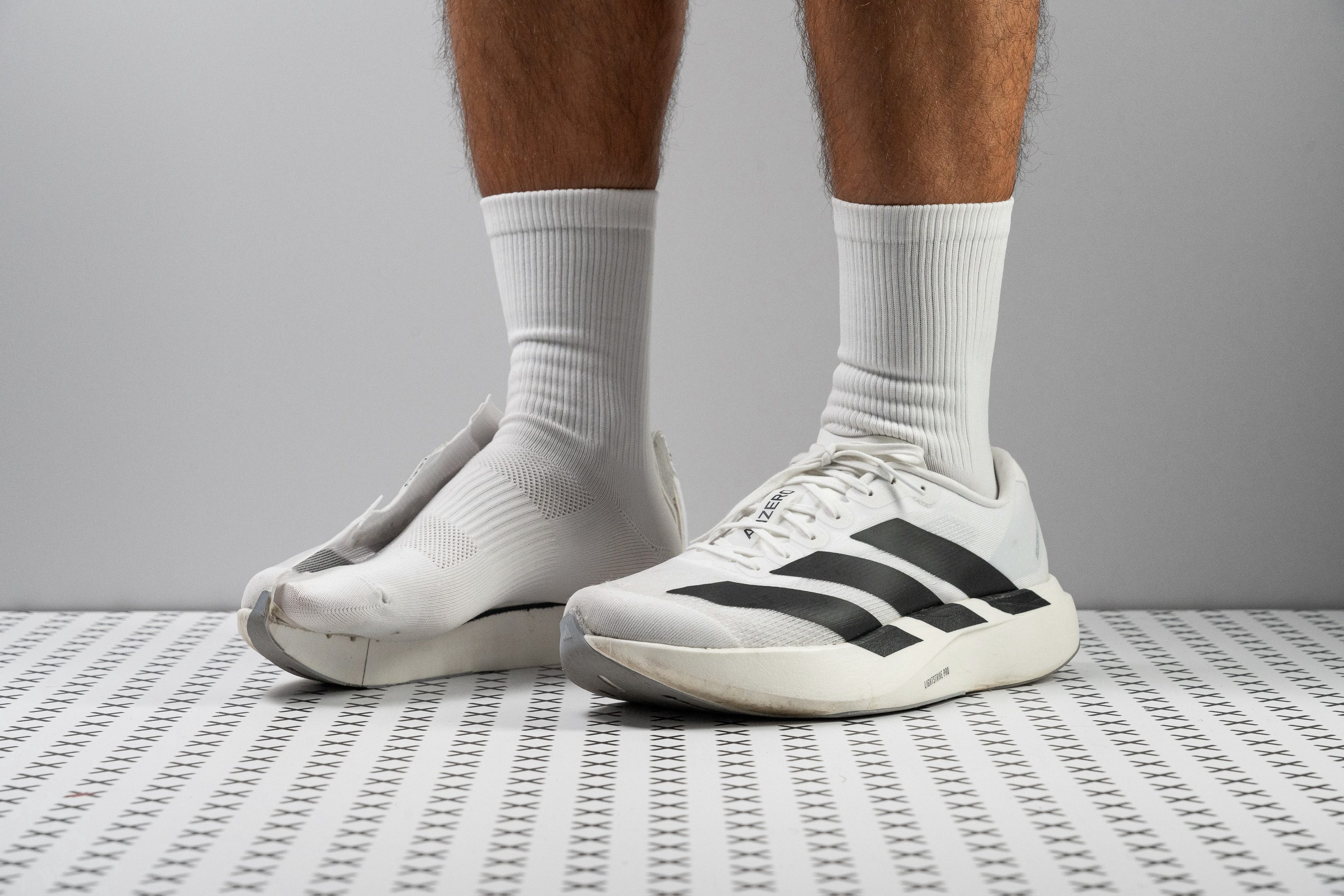


































































What makes it the best?
We thoroughly enjoyed our training runs with the Adidas Adizero EVO SL. It oozes pure comfort, delivering a powerful yet subtle stream of energy that helps us run faster and farther. Standing out in the all-rounder game, our lab results agree with what our feet enjoyed—this Adidas shoe is our best tempo trainer for treadmill running.
The main source of power lies in the Lightstrike Pro midsole. Testing for energy return, it returned impressive scores of 74.3% in the heel and 70.3% in the forefoot, validating the propulsive toe-offs we felt.
Our cut-in-half shoe reveals its lack of a carbon plate, making it comfortable for easy runs to race pace. True enough, our bend test reveals it’s 34.7% more flexible than average, keeping the ride smooth and all natural.
Another element that keeps us chasing the miles is its light 7.9 oz (223g) build, 15.8% below average. Topping it off is an incredibly breathable upper that ensures free-flowing winds beneath our toes. Our smoke test confirms we won’t overheat indoors with its 5/5 rating.
Unfortunately, its narrow midsole makes it less suitable for those needing extra support. Those who need more guidance should go for a stability shoe.
Pros
- 100% Lightstrike Pro superfoam
- Exceptional value-to-performance ratio
- Low weight
- Ultra-breathable upper
- Unmatched versatility
- Agile and fun ride
- Handles short and long runs with ease
- Striking Evo 1-inspired aesthetics
- Striking Evo 1-inspired aesthetics
Cons
- Poor-quality laces
- Short, non-gusseted tongue
- Toebox durability
Best low drop running shoes for treadmill
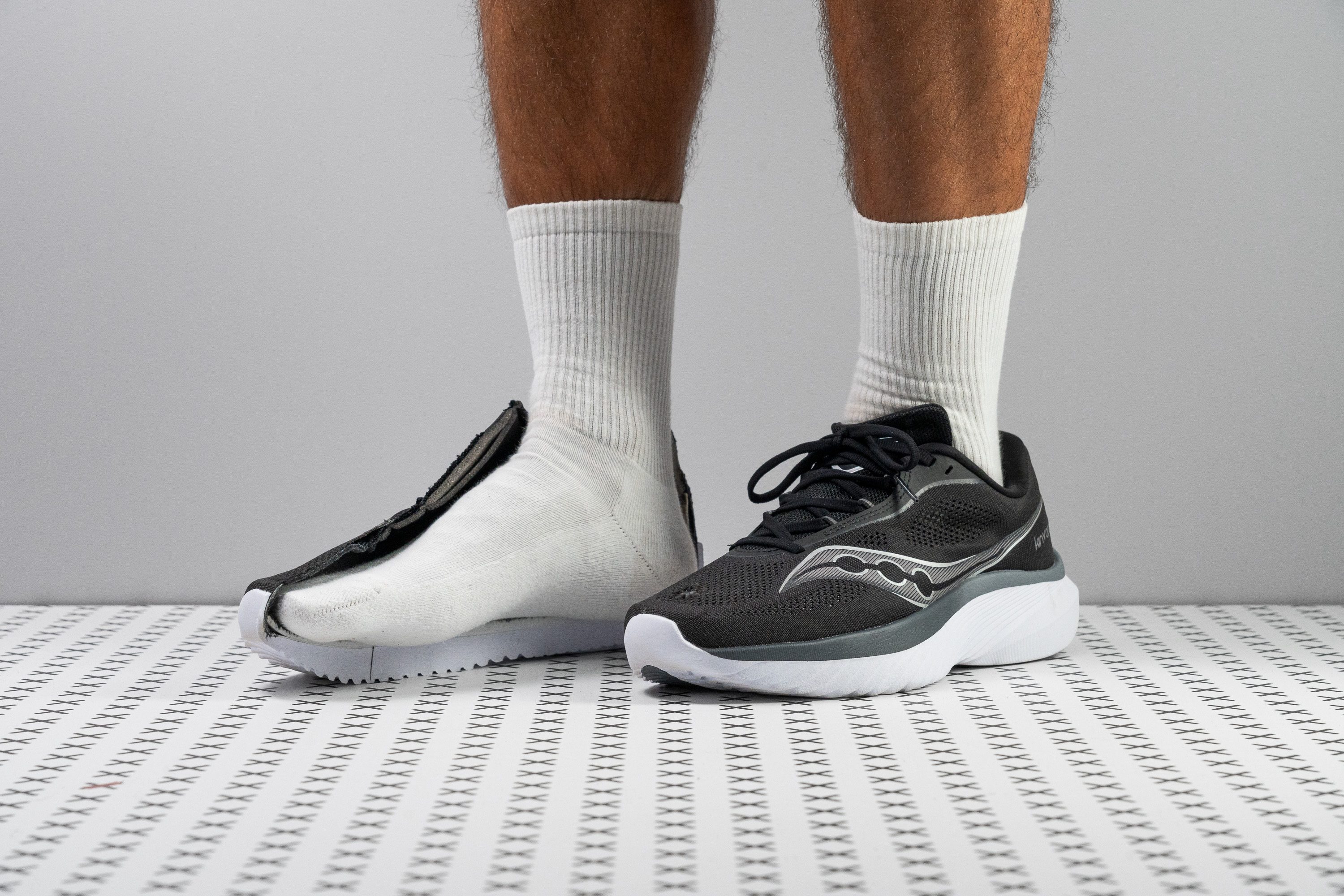

























































What makes it the best?
Saucony’s Kinvara 15 is our best low-drop treadmill trainer and our lab confirms what we experienced: it’s a no-fuss shoe that feels easy on the feet, regardless of pace. Its grounded platform, loose build, and airy nature kept us agile and fatigue-free in our runs.
The ride has a hint of stability due to the shoe’s low configuration. With our calliper, we measured a heel-to-toe drop of 4.4 mm, 48.8% less inclined than average. This fosters a natural running sensation akin to barefoot strides, notably with its featherweight 6.8 oz (194g) design, shedding 26.8% off the average running shoe's weight.
The midsole boasts a light PWRRUN foam that allows us to breeze through treadmill training. We found it easy to pick up the pace during speed training. We also felt like we were the main driver of our runs as the shoe freely adapted to our movements. Our bend test confirms its out-of-this-world flexibility to be 53.3% above average.
To maintain comfort during indoor runs, Kinvara 15 has excellent ventilation, and our breathability tests agree with a flawless 5/5 rating.
Regrettably, durability is compromised by the exposed foam and thin rubber areas measuring only 3.0 mm. If longevity is a priority, it's advisable to explore alternative options.
Pros
- Easy on the wallet
- Feels great at faster paces
- Really fun
- Retains classic Kinvara vibes
- Stable, low-to-the-ground ride
- Suitable for daily wear
- Exceptionally lightweight
- Enhances foot strength
- Top-notch breathability
Cons
- Limited to short runs
- Not ideal for heel strikers
- Toebox durability
- Minimal outsole rubber coverage
5 things to look for in treadmill running shoes
Many runners think that you can run on the treadmill in just about any running shoe. Maybe not ANY running shoe, but sure, most of the road shoes are good for the treadmill.
Here are a few things to pay attention to that can make your treadmill runs better:
- Breathability. Best to find a breathable shoe because treadmills are always inside and it can get very hot in a gym. After all, it’s not as easy for us to get the treadmill to the top of the mountain as it is for some. In our reviews, you can look for shoes that scored 4/5 or 5/5 on the breathability test.
- Shock absorption and stability if needed. This is very important because running on the treadmills means no change in terrain, no turns, it’s just very repetitive motion over and over again. To avoid unwanted strain on your legs, get enough cushioning for impact protection and stability if you’re overpronating or enjoying stability elements on the longer runs.
- Regular grip because the treadmill is flat, there are no sharp turns, or obstacles, and there’s no rain, snow, mud. Very grippy outsoles can be overkill on a treadmill and make the runs weird.
- Treadmills are softer than pavement so you might look for lighter running shoes that would make your runs easier/better.
- Energy return, especially if you're logging miles at faster paces, or simply long mileage on the treadmill.
The rest depends on what you plan to do on the treadmill. Many will go for tempo or race shoes when doing tempo runs, and many runners would go for a softer, recovery daily trainer, if they are resting from the hard sessions.
Breathability of treadmill running shoes
As mentioned above, best to look for very breathable running shoes. In our lab, we test breathability by pumping the smoke into the shoe and looking at where the smoke comes out and how fast. Based on that, we give the breathability rating on a 1-5 scale where 5 is the most breathable.
We also examine the upper of running shoes under the microscope to better understand the smoke test results. Breathable running shoes often have 1-layer uppers that are thin and have ventilation holes.
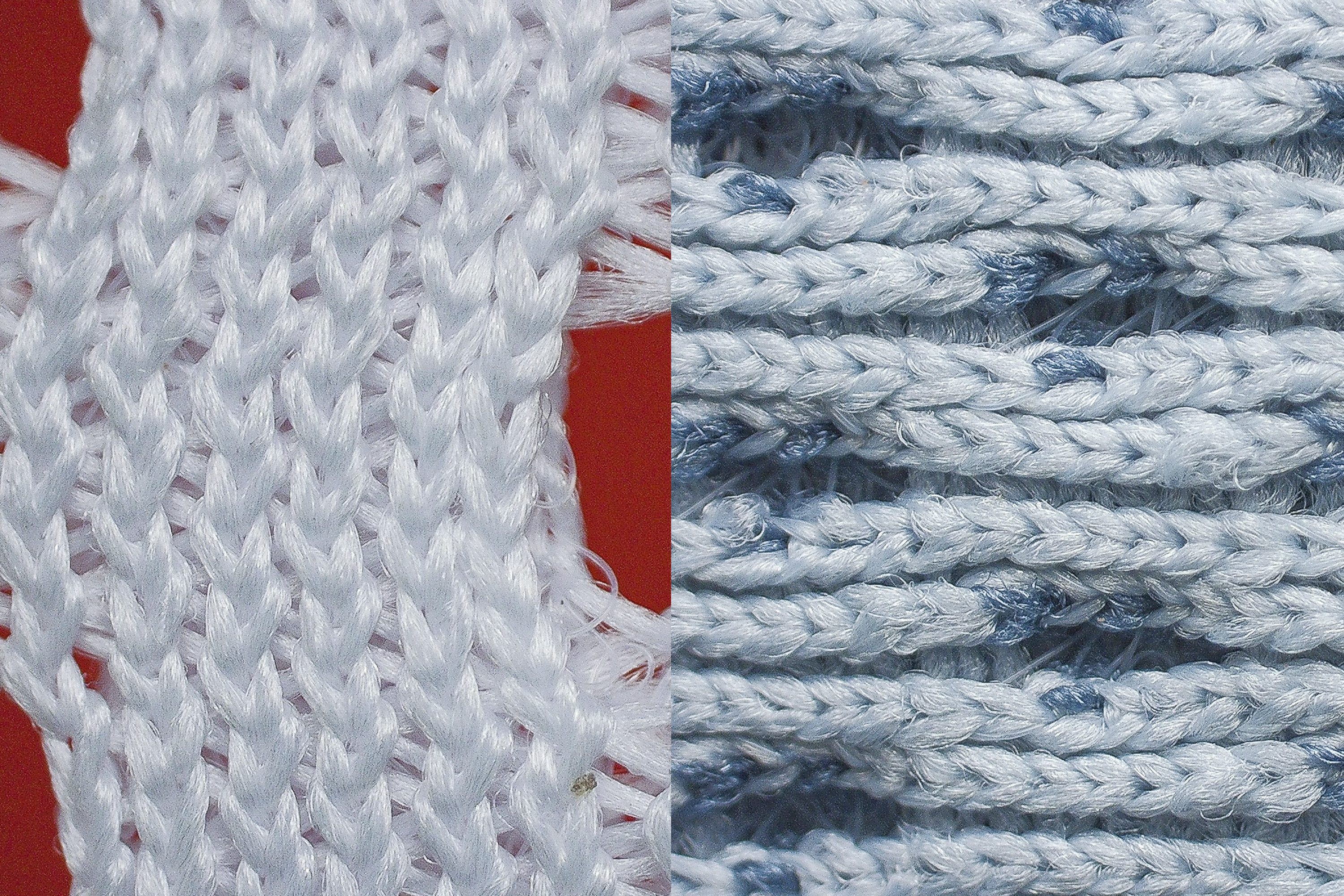
Non-breathable running shoes have tightly woven uppers that often have overlays as well. We’re able to see these overlays when we put the upper against the flashlight.
Cushioned, protective, stable, what else?
If you log long runs on the treadmill, you might enjoy running shoes with enough cushioning or, with cushioning that offers great shock absorption. Shock absorption tells us how good the midsole is at dampening the impact at the landing.
The better the midsole at dampening the impact forces, the less you or your legs have to deal with that stress, so naturally, we want this as high as possible.
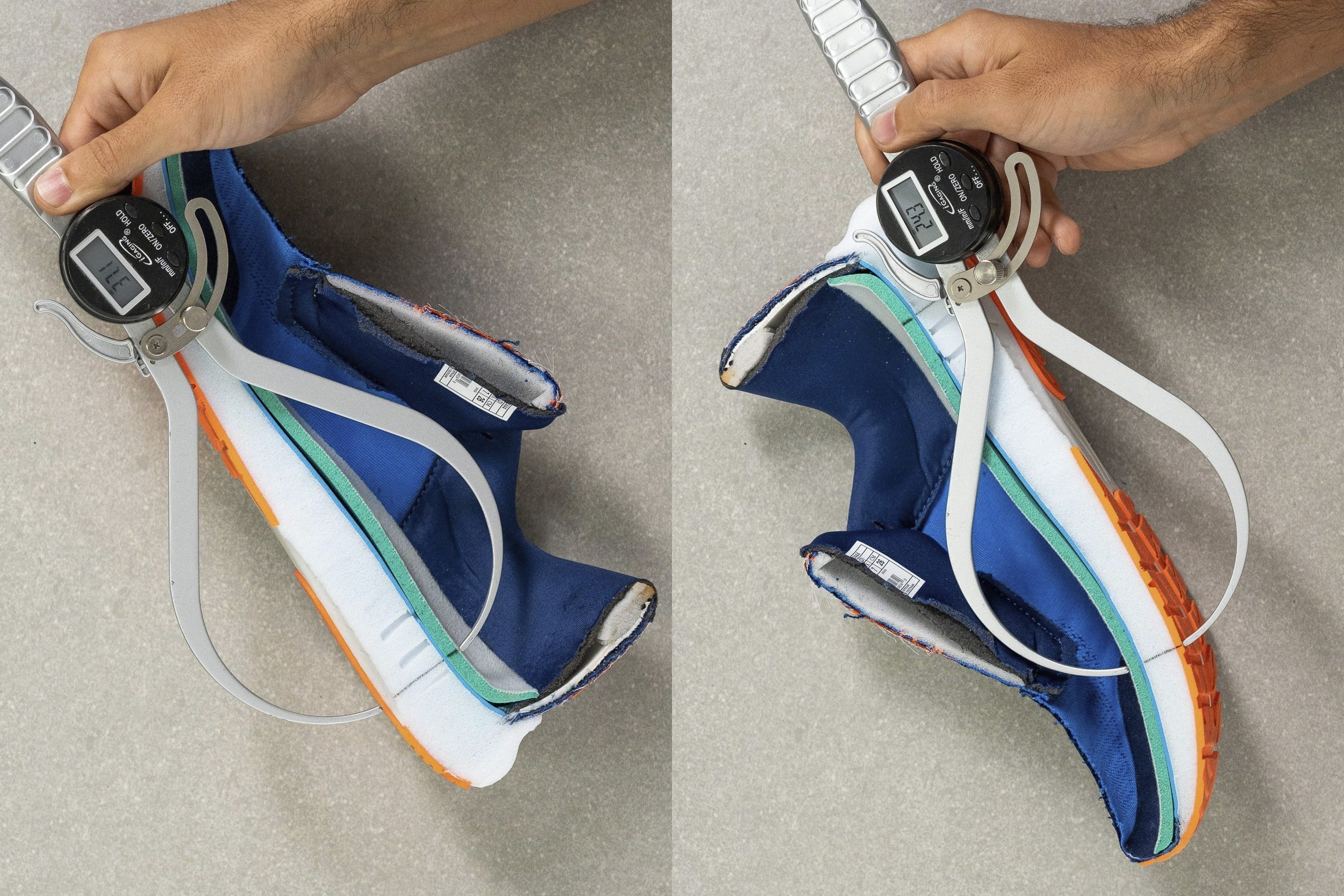
If you're a forefoot striker, you may want to check the data for the forefoot:
Another important thing to consider is stability. If you’re an overpronator and need a stability shoe, definitely look for one when it comes to running on a treadmill.
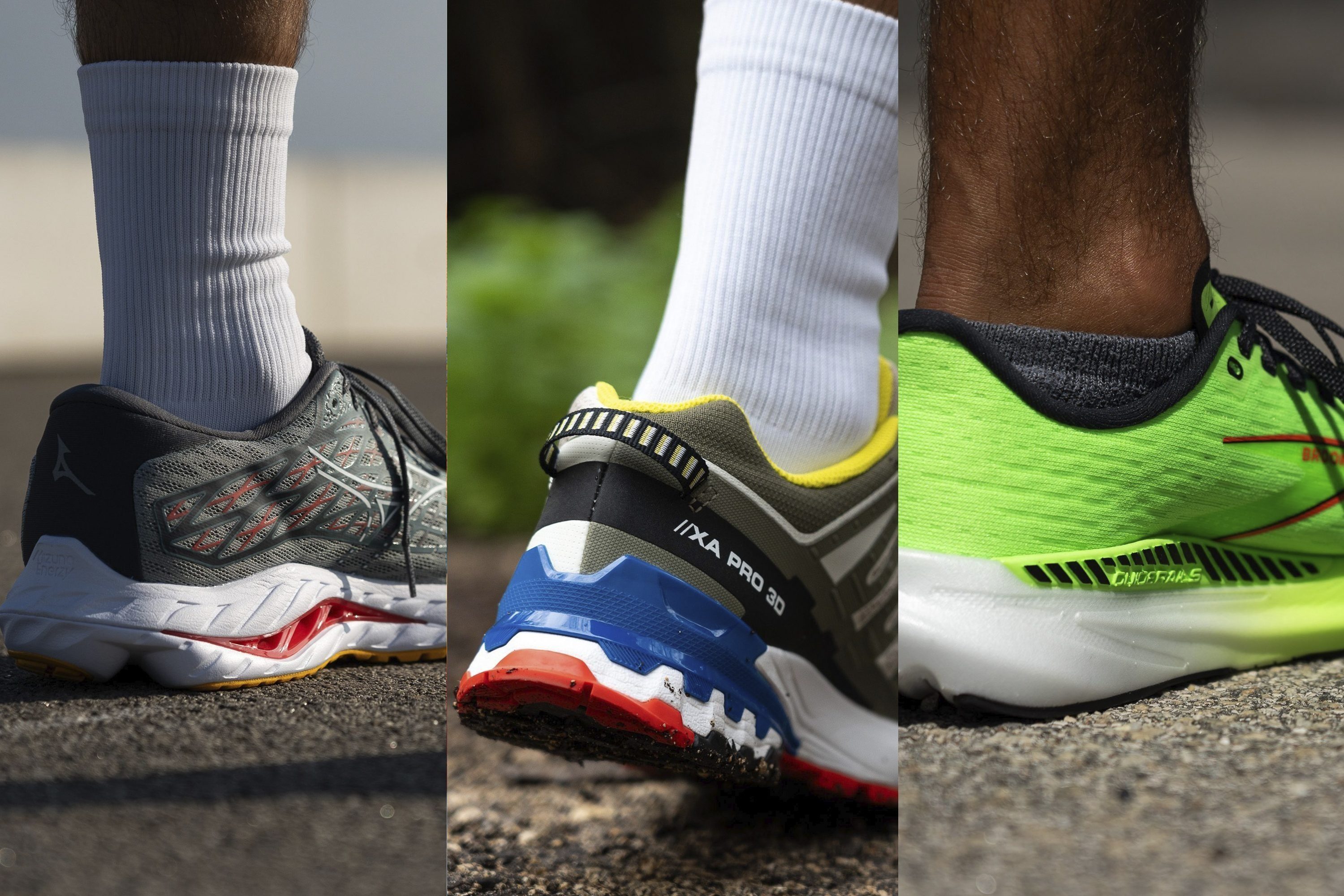
Even neutral runners, especially the heel-striking ones, enjoy some stability when the miles start piling up because there’s no diversity there, just the same motion on the same surface at the usually same inclination.
When it comes to neutral running shoes, a wide base helps with stability a lot. Because of this, we measure the width of the base at the forefoot and at the heel.
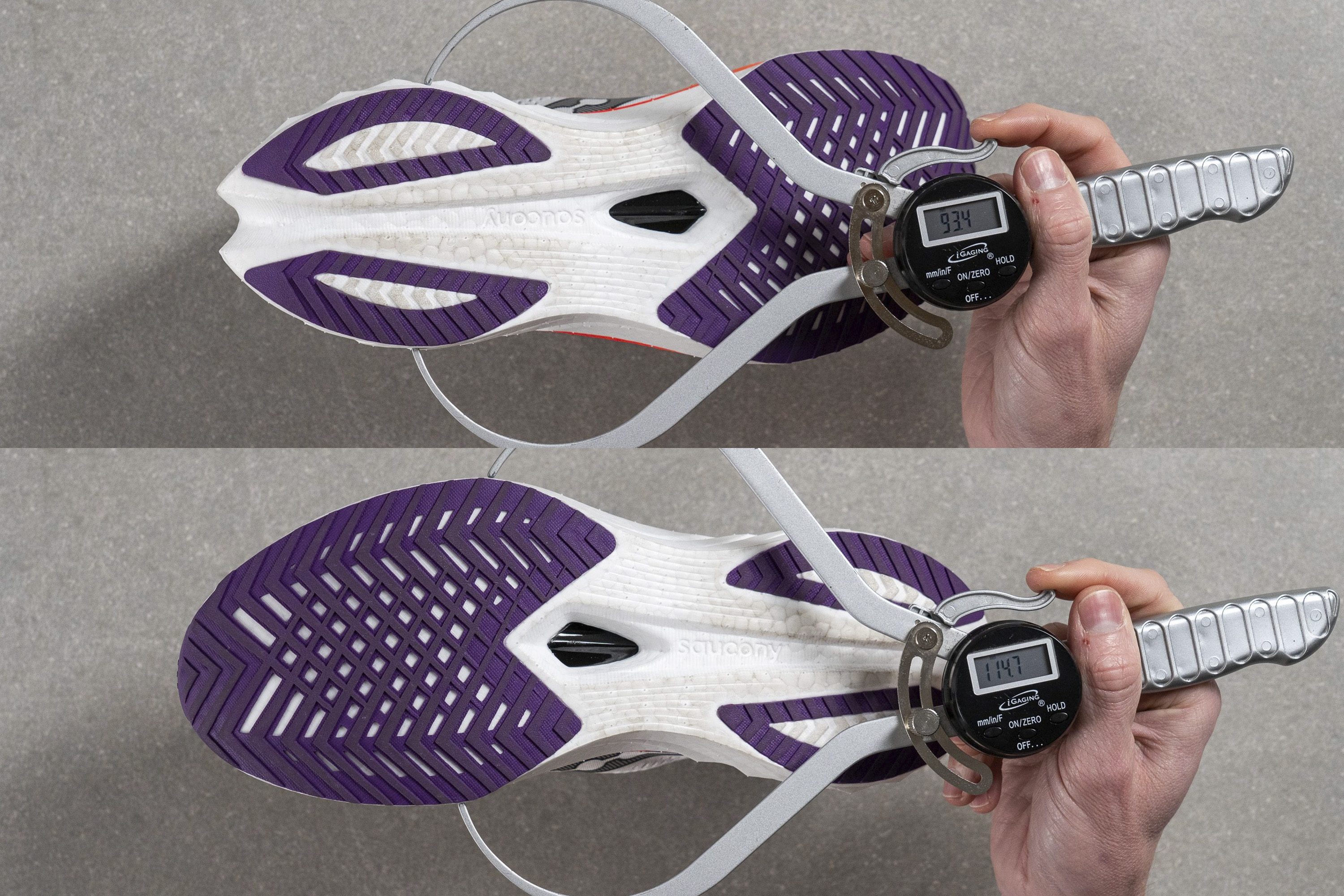
Based on this, you can choose shoes with wider midsoles if you want a more stable ride.
Energy return of treadmill running shoes
Now that we've found a shoe with great shock absorption, we should look at energy return as well. If we don't take it into account, we may end up with a shoe that absorbs the impact perfectly but then stays compressed, squished, and it does not bounce back up quickly or nearly to the original height. And this means your legs will have to work more to compensate!

Why risk it? Energy return is great, and we all love running in responsive running shoes. The effect of high energy return in running shoes is also called a leg-saving feature because the responsiveness prevents premature foot fatigue.
Traction of treadmill running shoes
When it comes to running on the treadmill, given that it is softer than concrete, we can advise:
- No lugs! So, don’t go for hybrid shoes (road-to-trail shoes) and definitely don’t go for trail shoes
- The rubber that is not too grippy; if it bites into the treadmill like claws, it can feel ob
What you should pay attention to when it comes to the rubber is where it is placed on the outsole. This indicates which foot strike the shoe is made for.
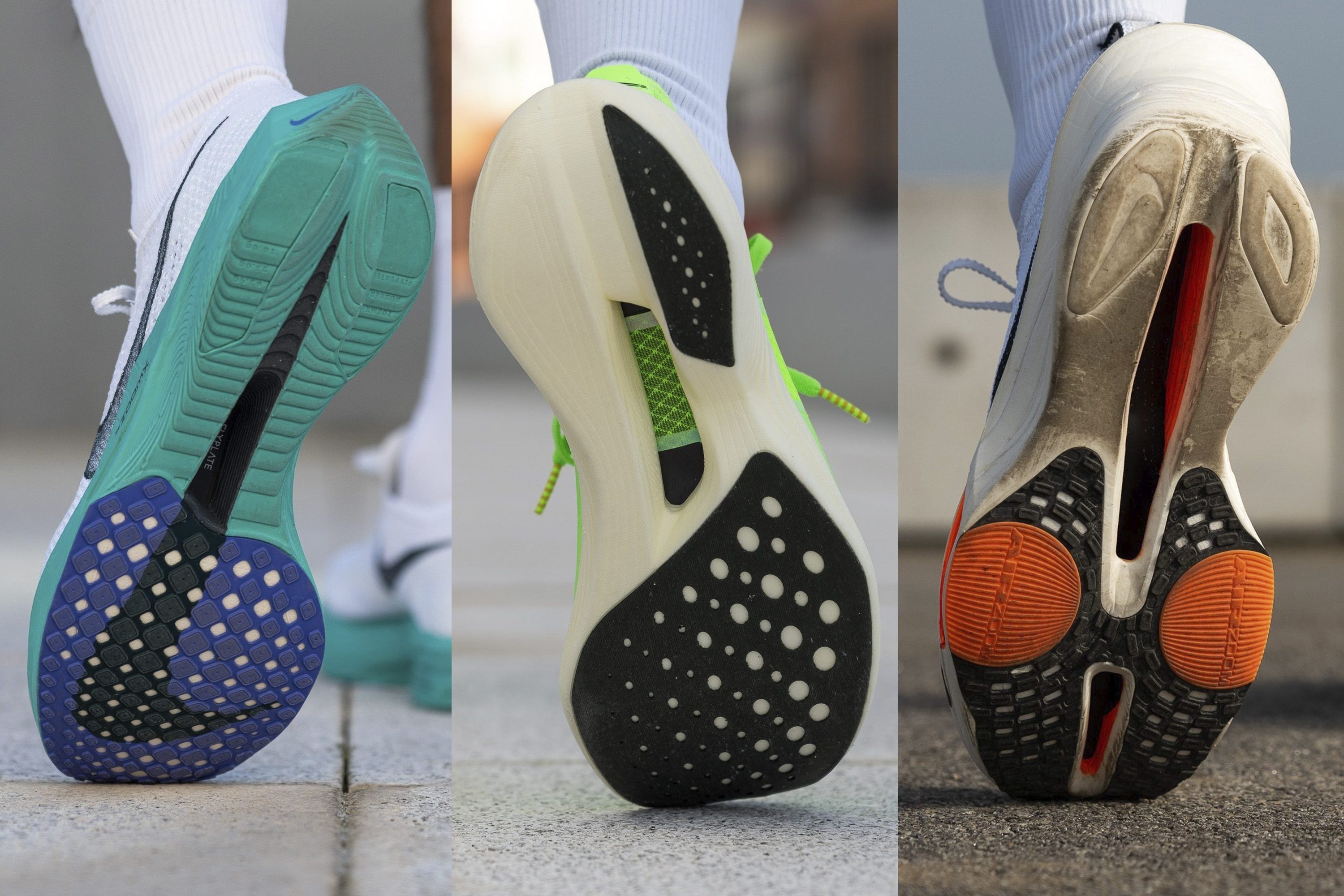
When heel strikers run in these shoes, they tend to wear them out sooner because there’s no rubber at the heel and the exposed foam is MUCH LESS durable.
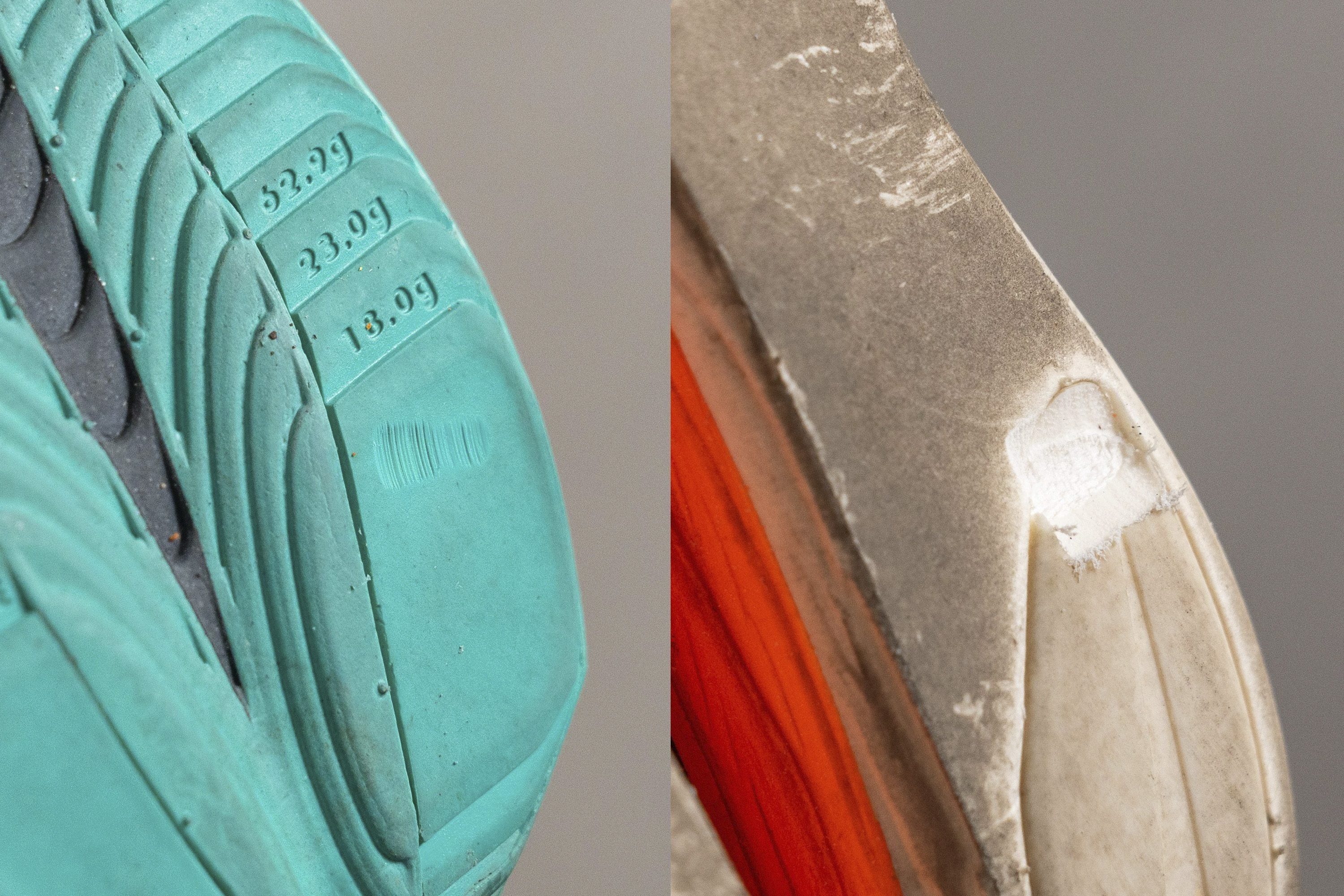
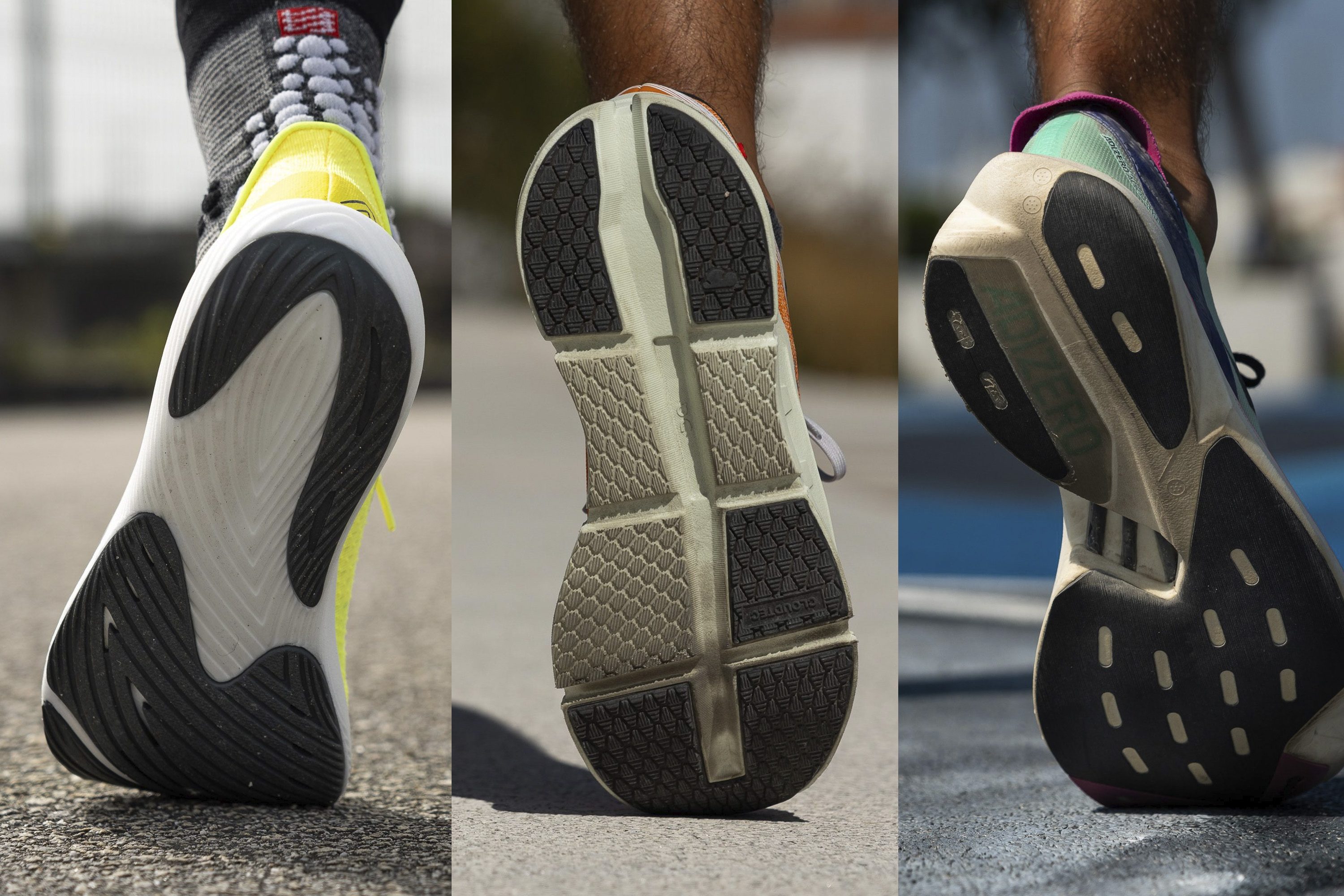
In the lab, we actually test the traction of all running shoes. We do so by pressing the shoe using a force of 500N against the wet surface and we use a 7-degree wedge to test the traction at the forefoot. The result is a dynamic coefficient of friction or dynamic CoF and, the higher it is, the better the traction on wet surfaces.
Weight: lab data for treadmill running shoes
We measure the weight of every shoe that comes into our lab.

When it comes to treadmill running shoes, we think lighter is better as long as you get the prioritised features (breathability, cushioning, stability). But, many shoes are great for treadmills and their weight varies. Have a look at the table below.
Why heel drop matters for treadmill runs
Actually, heel to toe drop matters for ALL runs.
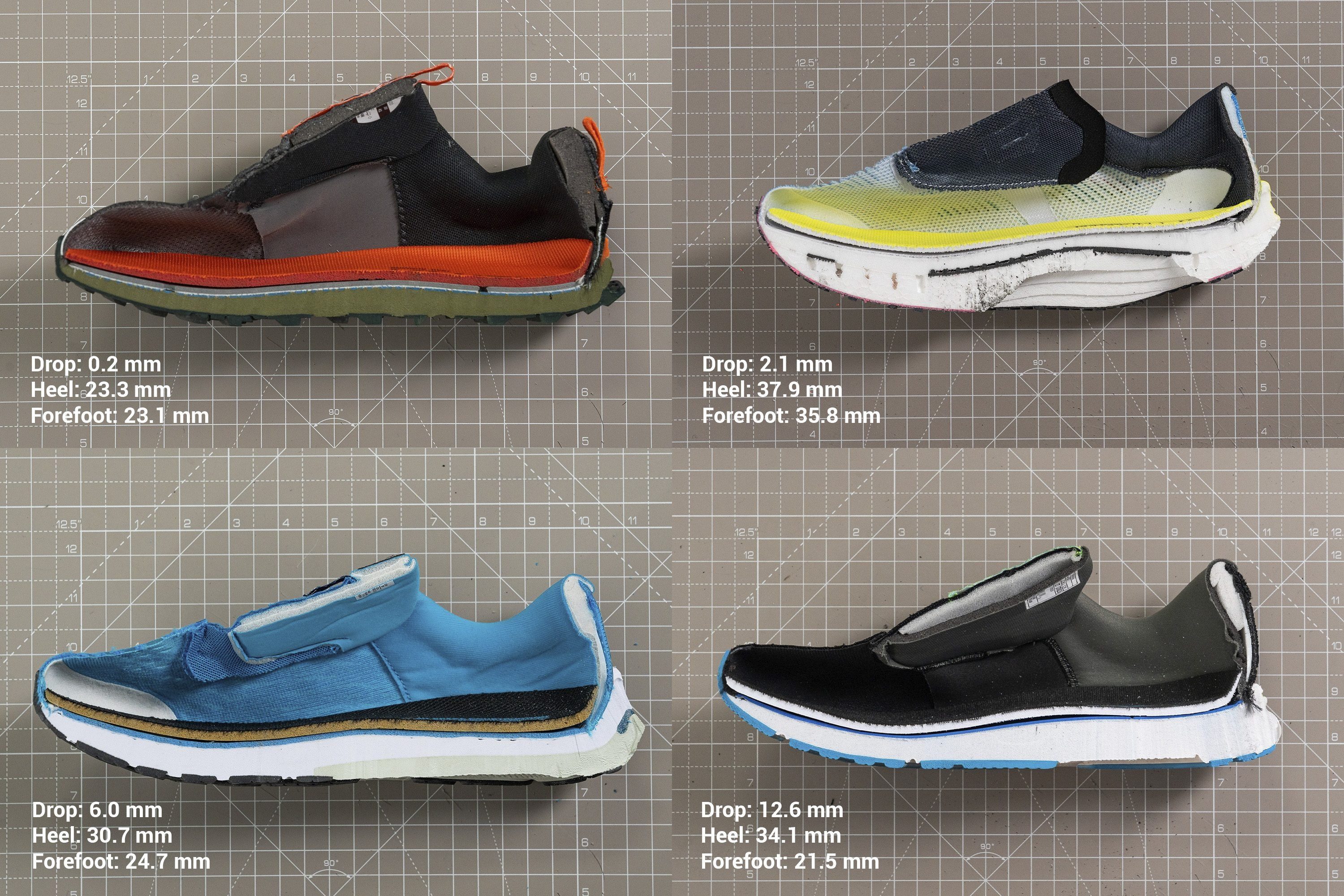
Sudden changes in heel drop are never advised and one should transition to a new drop gradually. Otherwise, anything can happen, from feeling muscle pain due to sudden overuse to injury.
If you’re new to this topic, we recommend this reading material: Heel to toe drop: The ultimate guide.
This happens because different heel drops utilise different muscle groups. Zero drop is the drop that activates your foot muscles the most. Lower drops (lower than 6mm) activate muscles below the knees - calves and Achilles. And high drop will go for the thighs and hip muscles. A sudden change in heel drop is considered anything from 4 mm and above.
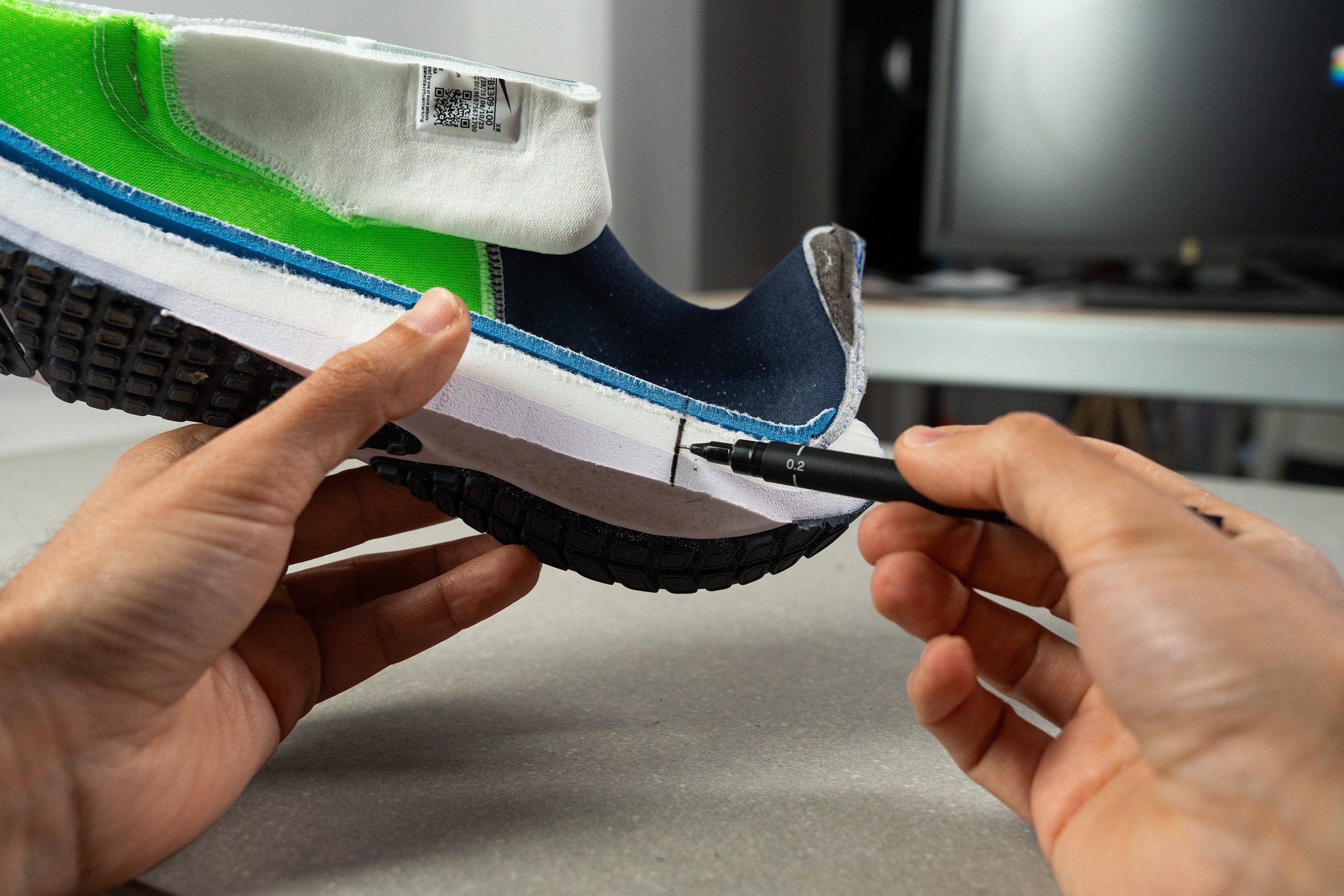
Beginners are usually advised to go for a ~10mm drop. If you already have a pair of running shoes and are considering a new pair, make sure the drop is in the ok range or plan the adaptation period carefully.
It’s VERY important to know that brands often publish heel drop numbers that are WRONG. In the lab, we measure stack heights according to the guidelines from WorldAthletics so our measurements are accurate.
When your toes need more room
Many runners don’t use the treadmill just for the warmup but to actually log miles, especially LSDs. Long runs mean a lot of sweat and swelling, and if your toes need more room to splay because they don’t want to feel cramped and don’t like the idea of blisters and bloody nails, look for shoes with a wider toebox.
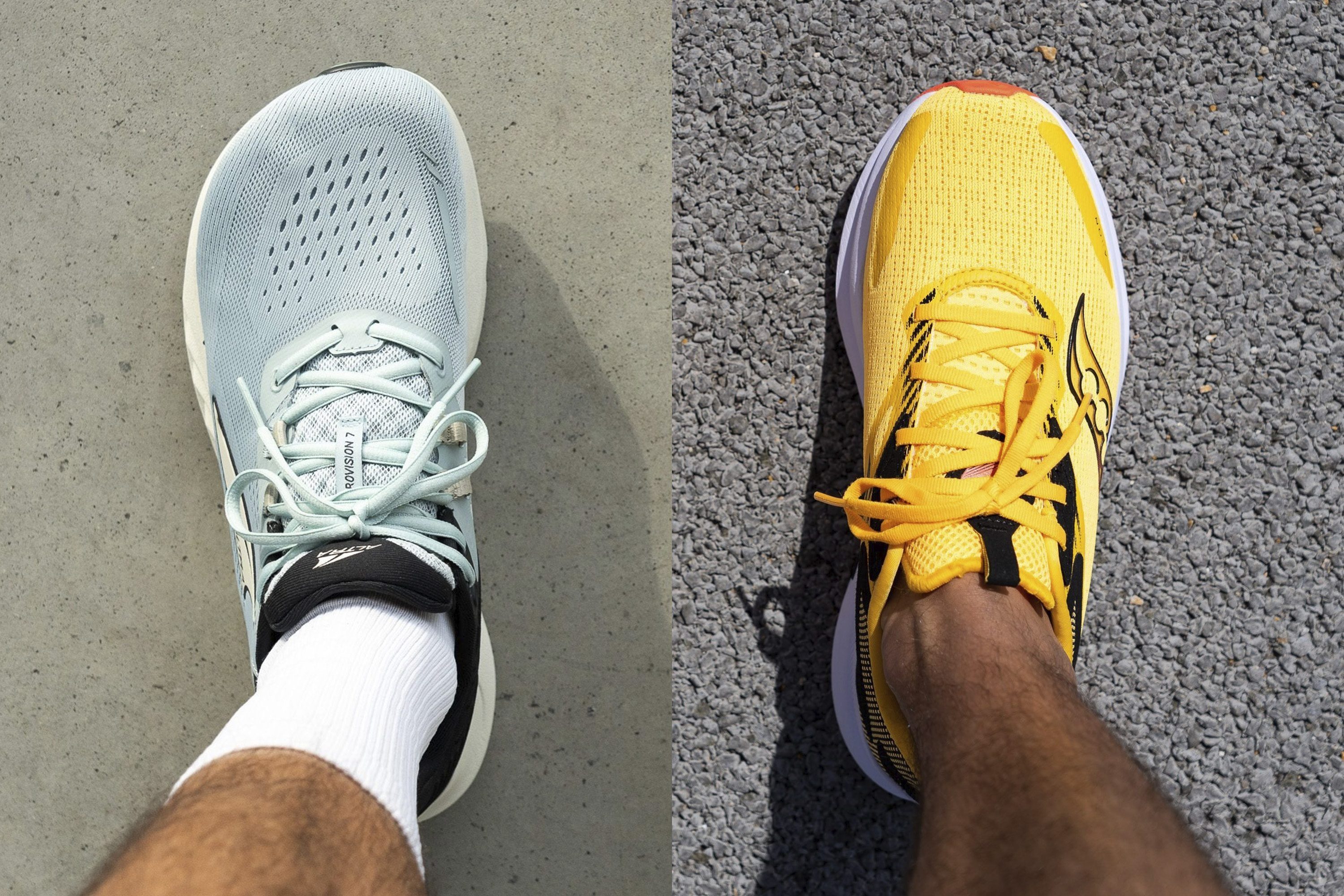
For this purpose, we measure the width of the shoe in 2 places: where it’s widest and at the big toe. This allows us to understand how wide and how pointy the toeboxes are.
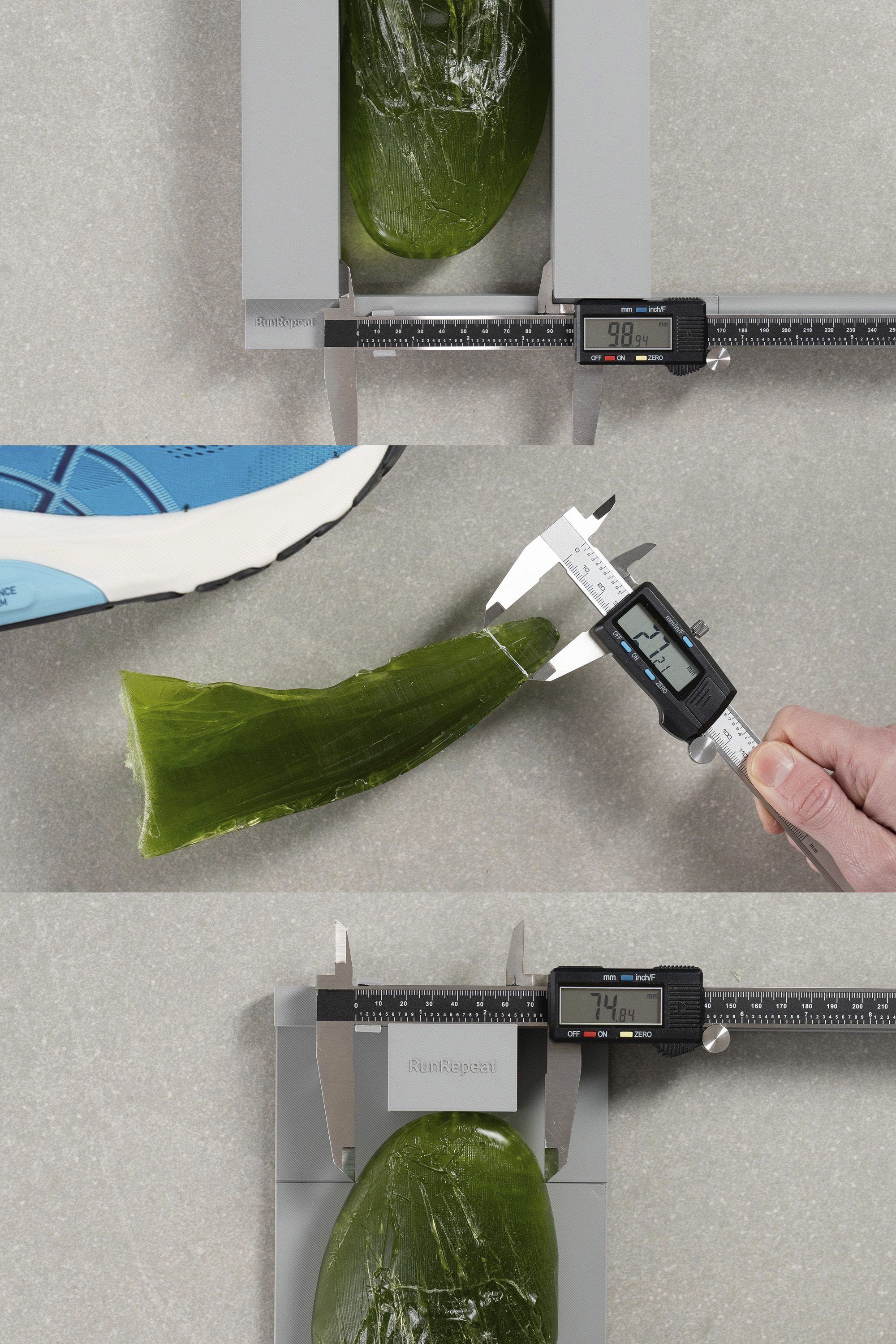
We do this because not all feet are the same and there are different shapes of the toes out there.
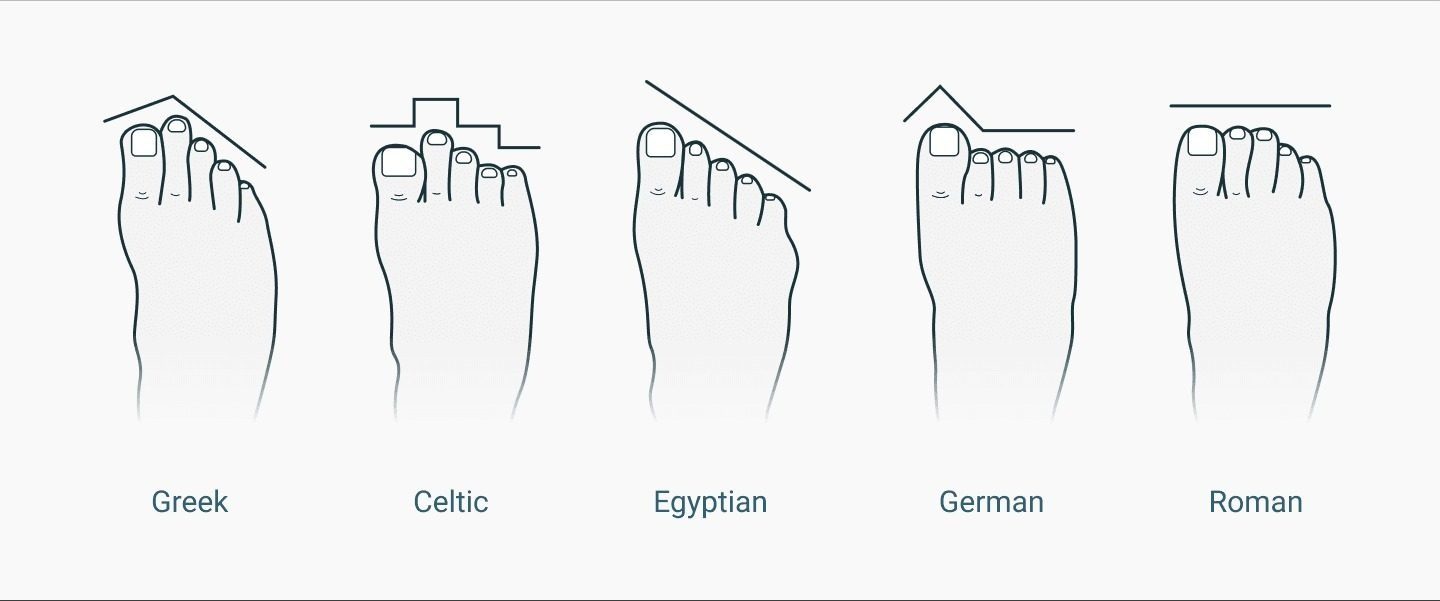
Some need more room closer to the tip of the shoe (at the big toe), others need more room around the ball of the foot (where the shoe is the widest).
And, if you often experience too much pressure on the toes and toenails, or maybe even black toenails, we recommend looking for high toeboxes.
And if the shoes feel narrow overall, it’s best to look for a wide option.
| Narrow | Medium | Wide | Extra wide | |
| Men | B | D | 2E | 4E |
| Women | B | 2A | D | 2E |
Labels for different widths of shoes
You can find these labels on the shoes and shoe boxes. If shopping online, the width is usually very clearly shown.

